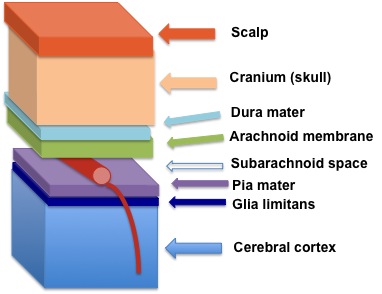Yersinia pestis holds the dubious title of the world's most devastating bacterial pathogen. While its glory days of the Black Death are thankfully a thing of the past, this pathogen remains a threat to human health to this day. A recent paper published in
PNAS describes how the bacterium switches off the immune system in the lungs, going some way to explain why the pneumonic form of the Black Death is almost always fatal if untreated.
During the Middle Ages, the plague, or Black Death—so called because of the blackening of its victims' skin and blood—killed approximately a hundred million people across the world. In Europe, in particular, between thirty and sixty-percent of the population is believed to have perished. Although we now know that the bacterium responsible was transmitted by rat fleas, Europe in the Middle Ages was not known for having a sound grasp of science. Theories to explain the cause of the Black Death included a punishment from God, alignment of the planets, deliberate poisoning by other religions, or ‘bad air'. This final theory persisted for some time leading seventeenth-century doctors to don a bird-like mask filled with strong-smelling substances, such as herbs, vinegar or dried flowers, to keep away bad smells and, therefore, the plague.
While today we can cure the plague with antibiotics, historical treatments were as unreliable as the Middle Age's understanding of the disease. The characteristic swellings of a victim's lymph nodes were often treated by blood-letting and the application of butter, onion and garlic poultices. But such remedies did little to improve a victim's chances (even if it did make them smell delicious)—mortality rates varied between sixty and one-hundred percent depending on the form of the disease afflicting the patient. This led to the desperate population attempting far more extreme measures, such as medicines based on nothing but superstition including dried toad, or self-flagellation to calm their clearly angry gods.
The three predominant forms of the disease were described by a French musician named Louis Heyligen (who died of the plague in 1348):
"In the first people suffer an infection of the lungs, which leads to breathing difficulties. Whoever has this corruption or contamination to any extent cannot escape but will die within two days. Another form...in which boils erupt under the armpits,...a third form in which people of both sexes are attacked in the groin."
So anything involving the words "attacked in the groin" is clearly a bad thing. But these three forms of the plague come in different flavours of "bad". Of the three, bubonic plague with its unpleasant boils and swellings is the least fatal, killing around two-thirds of those infected. Whereas bubonic plague spreads throughout an infected person’s lymphatic system, septicaemic plague is an infection of the blood-system and is almost always fatal. The final form, the rarer pneumonic plague, also has a near one-hundred percent mortality rate and involves infection of the lungs, often occurring secondary to bubonic plague and capable of being spread from person-to-person.
One of the most interesting aspects of pneumonic plague is that the first 36 hours of infection involve rapid multiplication of the bacteria in the lungs but no immune response from the host. It is as if the immune system simply doesn’t notice the infection until it is too late to do anything about it. This ability to replicate completely beneath the immune system’s radar makes
Y. pestis unique among other bacterial pathogens and a group from the University of North Carolina recently attempted to shed some more light on how
Y. pestis achieves this feat, publishing their findings in PNAS.
So is
Y. pestis's success down to a) an ability to hide from the immune system, or b) a deliberate suppression of the normal host response to a bacterial infection? To answer this question, the scientists coinfected mice with two strains of
Y. pestis—one capable of causing plague in mice and one which is usually recognised and cleared by the immune system. If the bacteria are capable of modifying the conditions in the lung for their own benefit, it should be possible for a non-pathogenic mutant of
Y. pestis to survive when co-infected with a virulent strain.
And this is exactly what the scientists found. In the above image, the green bacteria would normally be cleared by the immune system but, in the presence of the pathogenic red strain, they are able to survive. This suggests that the pathogenic
Y. pestis is actively switching off the immune system, establishing a unique protective environment that allows even non-pathogenic organisms to prosper. The authors went on to show that this effect isn't limited to strains of plague—other species of bacteria not usually able to colonise the lung can also replicate unperturbed when present as a co-infection with
Y. pestis.
Part of this immunosuppressive role is carried out by effectors injected into the host cell by a type III secretion system—a kind of bacterial hypodermic needle. But this isn’t the only mechanism involved and, unfortunately, determining exactly how
Y. pestis establishes the permissive environment is proving difficult. The authors of the PNAS paper attempted to use a commonly used method to investigate which
Y. pestis genes are vital for an infection to progress. TraSH screening is a really clever method which involves infecting an animal model with large pools of gene mutants and determining which mutants are lost over the time-course of the infection. In other bacterial species, it is every bacterium for itself and mutants with a defect in virulence fail to survive in the animal model, giving an insight into which genes are vital for infection. But this does not work well for
Y. pestis due to the ability of virulent mutants to permit the growth of impaired mutants that, alone, would be unable to cause disease.
 |
Screening for genes involved in infection - an animal model is infected with a pool of single mutants. Those mutants lost during infection are identified and the mutated gene used to learn more about what is required for an infection. This method does not work well with Y. pestis as the attenuated mutants can survive in the permissive lung environment created by the other mutants despite not being able to create this environment on its own.
|
Part of the modern-day interest in pneumonic plague is, unfortunately, the result of a human rather than a natural threat—bioterrorism. The Black Death bacterium has an unpleasant history of use as a weapon. As far back as 1346, the Tartars catapulted plague-ridden corpses over the city walls of their enemies and, unfortunately, as technology and science advanced, so did our abilities to use deadly-diseases against our enemies. During World War II, the Japanese dropped bombs containing plague-infected fleas on Chinese cities, and the Cold War saw both America and the USSR develop aerosolised
Y. pestis. One of today’s concerns is that we don’t know what happened to all the weapons research carried out in the USSR, meaning that weaponised, antibiotic-resistant
Y. pestis must be considered a potential bioterror threat.
So understanding how the plague bacterium causes disease in humans is vital for the future development of new treatments and vaccines. And it is also a really interesting pathogen due to its unique way of ensuring it survives long enough in the host to be transmitted to other unfortunate victims.

























